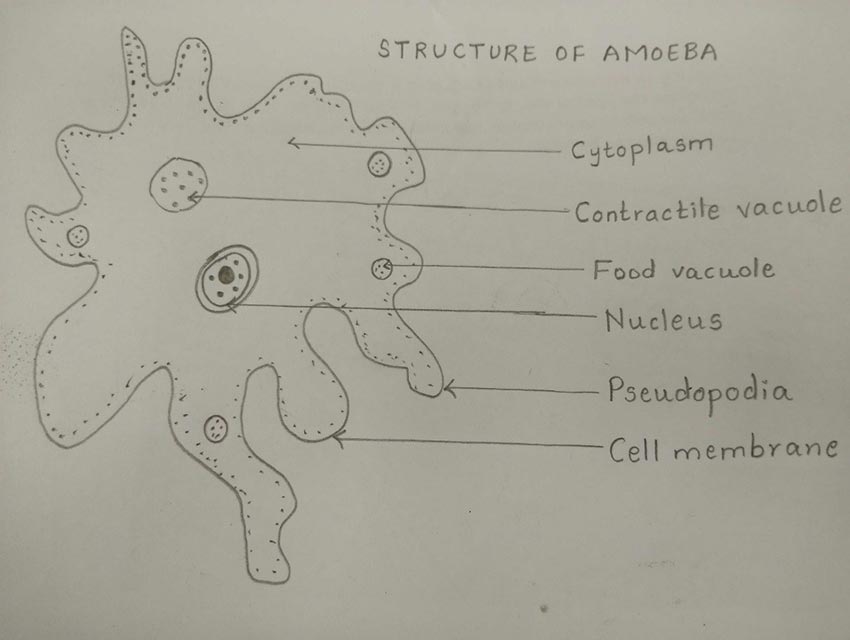Biology Diagrams Made Easy for CBSE and ICSE Board Exams

While diagrams play an unparalleled role in the theoretical and practical study of the life sciences, drawing them requires perception and perfection on the part of students.
By Topperlearning Expert 24th Jan, 2020 | 12:06 pm
ShareDiagrams offer a way for students to visually conceptualise the subject and engage with it in a way that isn't necessarily possible through a lecture alone. Biology is one such subject where diagrams play a crucial role. Learning biology depends not only on mugging up various terminologies but also on understanding diagrams in the subject. Drawing diagrams allows biology students to record their observations of a specimen and to refer to the illustration at a later date in order to recall the important features of a specimen. So, it is important for students to understand and practise the all-important biology diagrams with proper labelling.
Drawing biology diagrams sometimes becomes a tough job for students. The obvious reason being that an inaccurate, illegible diagram with no appeal can hardly impress the examiner in awarding maximum marks. Although students label parts correctly, they do not get full marks because of poor diagrammatic skills.
So, although students perform well in the descriptive and experimental parts, they often struggle with their diagrams. Knowing the appropriate ways of biological drawing can really improve a student’s overall performance in the subject. If you want to improve your grades in biology, you must know the technically feasible rules of drawing a biological diagram.
Here are a few tips and tricks which will make your diagrams look outstanding and accurate, helping you to score high marks.
- Use a pencil and unlined paper when drawing a biological diagram. Always use extra bold or 2H lead pencil to make your diagram clear. NEVER draw your diagrams with a pen.
- Position the diagram on the left-hand side of the page, leaving space for labelling on the right. DO NOT number the labels and mention them separately below the diagram.
- Use sharp single lines, large enough to depict all parts of the diagram clearly. DO NOT use soft lines characteristic of sketches. Make the illustration large so that various parts of the diagram are easily distinguishable.
- Represent darker areas of an object with stippling or dots. DO NOT SHADE any areas of the diagram. Shading specific areas of a diagram might look aesthetic to the eye, but this practice is not acceptable in biology.
- Keep in mind that the first part of a scientific name, or the genus name, must be capitalised. The second portion, or the species name, begins with a lowercase letter. Underline scientific names.
- Write the title of the diagram in capital letters and in the centre. Remember that the title must be concise and accurate, clearly explaining the subject of the diagram.

- For microscopic specimens, indicate the magnification at which you observed the object through the microscope. Write this information in one of the corners of the page.
- You should draw what you see, NOT what you WANT to see. Do not necessarily draw everything that is seen in the field of view. Draw only what is asked for.
- When drawing multiple diagrams, do not include more than two diagrams on a single page.
- Erase as little as possible to avoid making the diagram appear messy and/or hard to interpret.
- Try to draw the diagram with a single stroke of the pencil. Multiple strokes need to be avoided at all possible costs.
- Do not intersect the labelling lines because it causes confusion in understanding the part/portion you are labelling. You may lose marks for that. Draw the labelling lines parallel to each other as far as possible without intersecting them.
Having understood the few basic rules for drawing Biology diagrams, let’s now look at some of the important diagrams biology Class 10 CBSE and Class 10 ICSE. You will often find diagram-based questions for these topics in your exams.
- Structure of Neuron
- Structure of Brain
- Reflex Arc
- Human Excretory System
- Human Digestive System
- Internal Structure of Heart
- Human Respiratory System
- Nutrition in Amoeba
- Human Male Reproductive System
- Human Female Reproductive System
- Budding in Yeast and Hydra
- Regeneration in Planaria and Hydra
- Fragmentation in Spirogyra
- L.S. of a Flower
- Germination of Pollen on Stigma
- Mendel’s Dihybrid Cross
Here are a few simple steps to draw neat and labelled Biology diagrams of two common structures in the human body.
For human heart: (Watch video)
- You can draw the outline of the chambers of the human heart first.
- You can draw the auriculo-ventricular septum to divide it into two halves.
- Draw the arteries and veins associated with the heart.
- Then draw the valves present in the heart.
- Finalise your diagram and then add the appropriate labels.
For human brain:
- You can draw the outline of the human brain first.
- Begin by drawing two concave shapes or half-moon shapes. Draw a larger one for the cerebral cortex of the brain and a smaller one on its lower right side for the cerebellum.
- Draw swirly lines on the left side of the brain.
- Draw the right side of the brain, again with swirly lines.
- Thin and compact lines can be drawn for the smaller concave shape of the brain or on the cerebellum.
- Draw the spinal cord at the lower middle part of the brain.
- Finalise your diagram and then add the appropriate labels.
- Make sure to practise drawing diagrams regularly.
So that’s it. Simply follow these rules as closely as possible for important diagrams in biology class 10, and you’ll see your exam performance improve in no time. Happy drawing!
Important Resources
- Education Franchisee opportunity
- NCERT Solution
- CBSE Class 9 Mathematics
- NCERT Solutions for class 10 Science
- Sample Papers
- CBSE Class 9 Science
- NCERT Solutions for class 10 Maths
- Revision Notes
- CBSE Class 10 Hindi
- CBSE Class 10 English
- CBSE Class 10 English
- CBSE Class 10 Social Studies
- CBSE Class 10 Science
- CBSE Class 10 Mathematics
- Career In Science After 10
- Career In Commerce After 10
- Career In Humanities/Arts After 10
- NCERT Solutions for Class 10
- NCERT Solutions for Class 11
- Business Studies Class 12 CBSE project





